Thrilled With the Beautiful Colors, but Not the Flavors
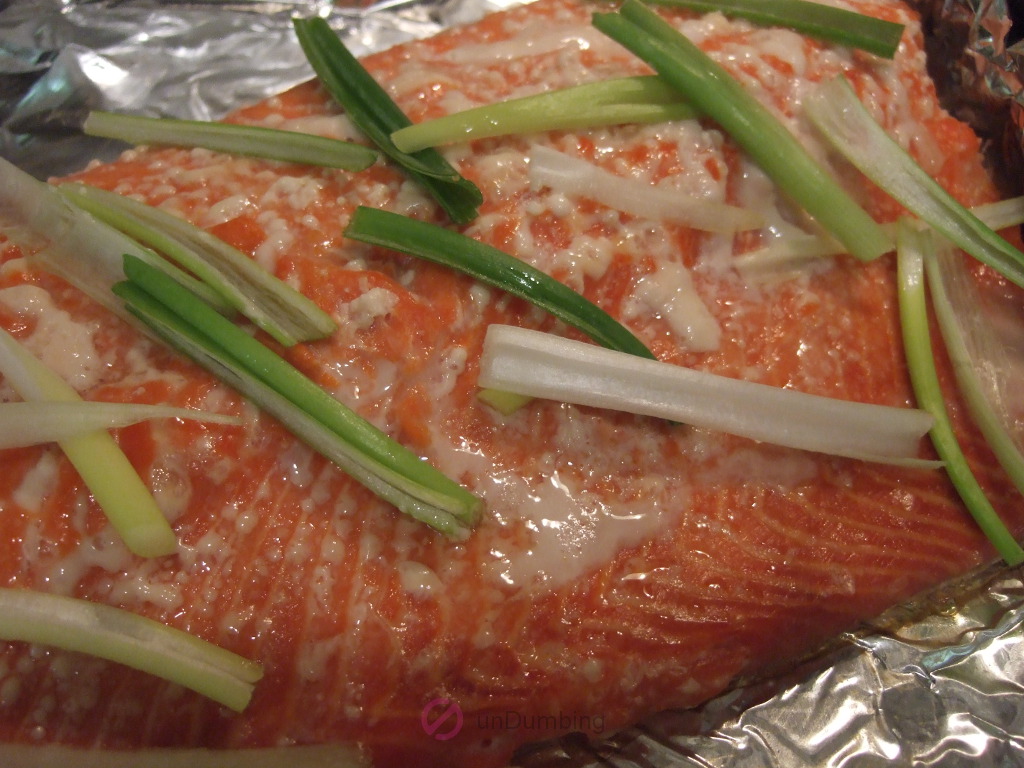
Although the green and white scallions on the bright red-orange sockeye salmon resulted in attractive colors, the sweetness didn’t entice me to eat more of it.
Below are some links to more details, including photos:
My Story
During one of my weekly trips to Costco, I found fresh wild whole sockeye salmon available for a dollar more per pound than what I usually spent on whole black cod there. To add some variety to our fish consumption, I decided to purchase one. However, that meant that I had to find a recipe since I hadn’t cooked this type of salmon before.
Inspiring Recipe
After some time on the internet, I found Japanese Miso Salmon Side (BBQ or bake) from a food blog, RecipeTin Eats. This website is also my go-to resource when I roast skin-on pork belly.
First Try
With the salmon already in the refrigerator, I still had to get a couple of key ingredients not already at home, i.e., the miso paste and sake.
Ingredients to Use
Starting with 2.97 pounds of salmon, I updated the default recipe to 7 servings.
Not only did I modify the recipe by using a whole salmon instead of a side of salmon, I also planned not to garnish with sesame seeds, since I didn’t think they would add much flavor to the dish.
As for the other garnish, I chose the scallions over the shallots and prepared to cut up two of them.
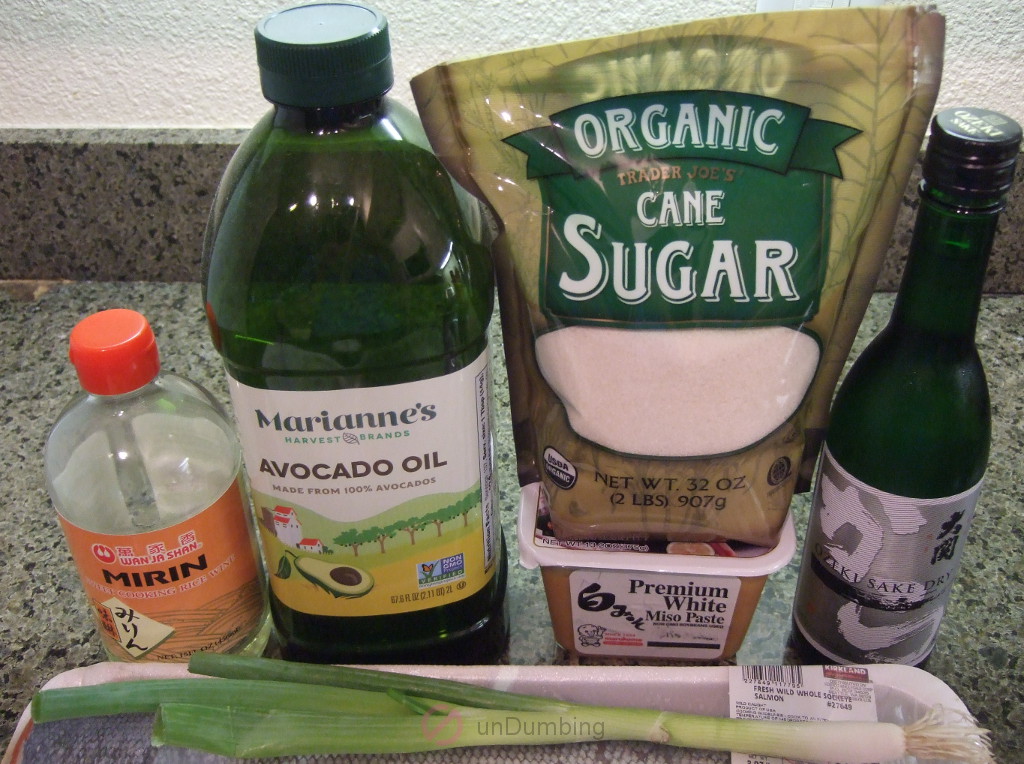
Steps to Prepare
In addition to the adjustments already made to the recipe as noted above, below are details to how I referenced the instructions:
- Step 1 – I mixed together the marinade ingredients in a small cup instead of a bowl.
- Steps 2 and 3 – After trimming the tail off the fish, I was able to fit it in the baking pan that I was using as the work surface. With the marinade divided into four parts, I slathered each portion into each side of the skin and flesh.
- Step 4 – By the time I was ready to prepare dinner, the salmon had already been marinating for about 25 hours.
- Step 5 – Scraping off the marinade ended up being an exercise of scaling the fish as well. After that, I let the salmon come to room temperature over almost a period of 1.5 hours.
- Step 6 – I skipped this step since I was making the salmon in the oven instead of on a barbecue.
- Step 7 – Though I assumed that I was supposed to oil the pan that was going into the oven, I forgot about it and went straight to the baking instructions in Step 3 of the Recipe Notes section.
- Step 8 – After broiling the salmon for 2 minutes in the previous step, I rested it for about 10 minutes in the roasting plan on top of a burner that was off. However, I didn’t cover the pan with foil as I didn’t think that was necessary.
- Step 9 – I garnished the fish with scallions, as planned.
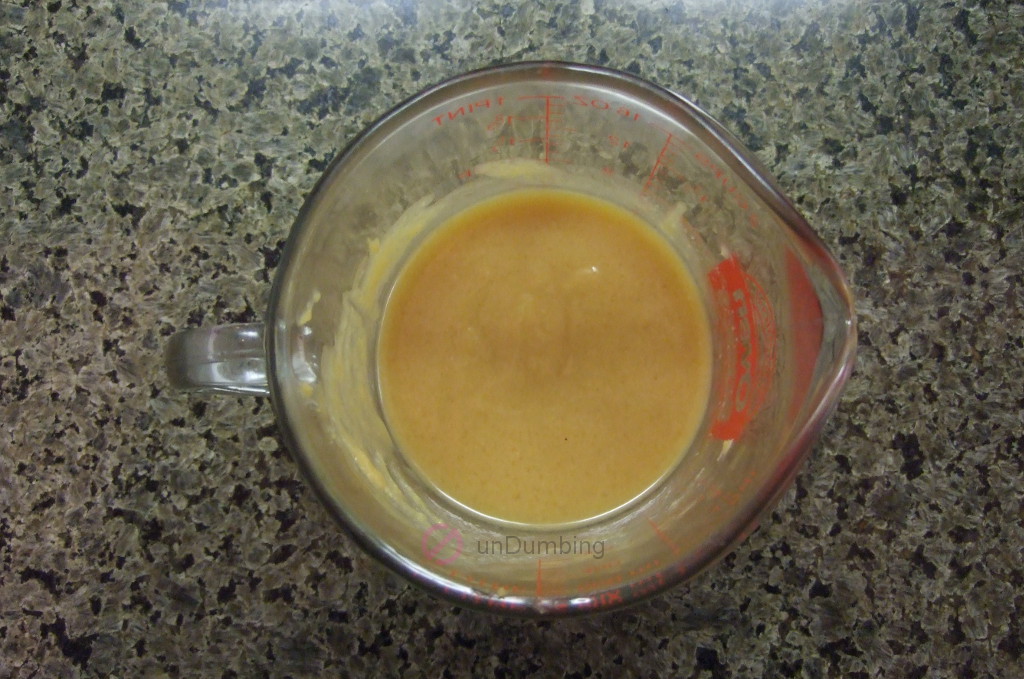
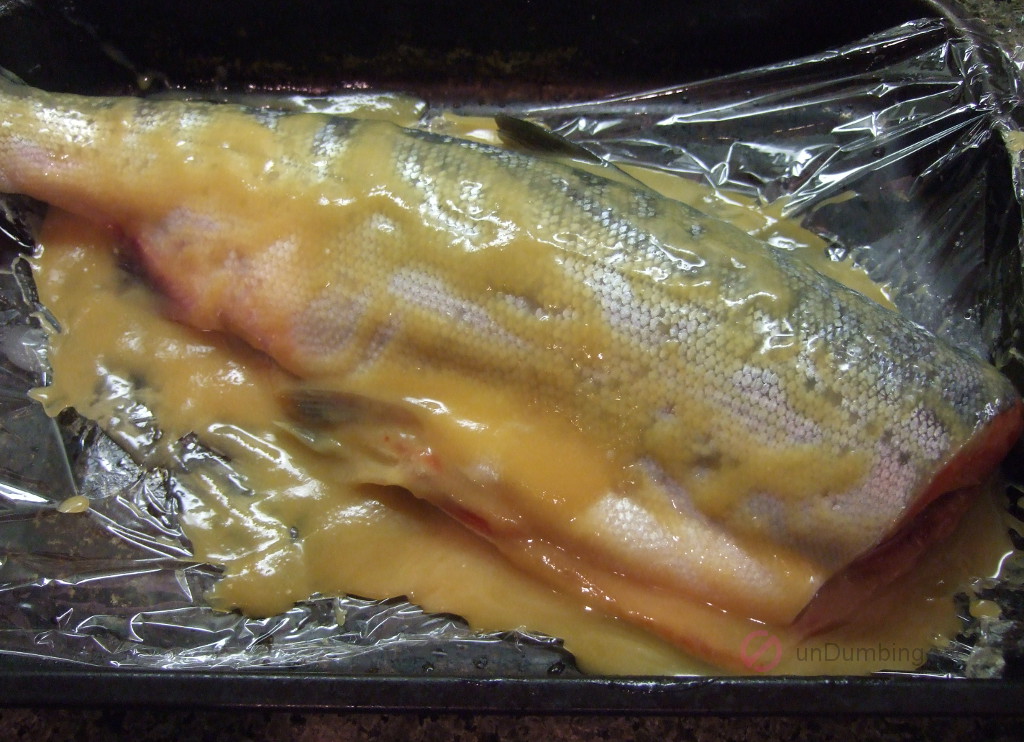
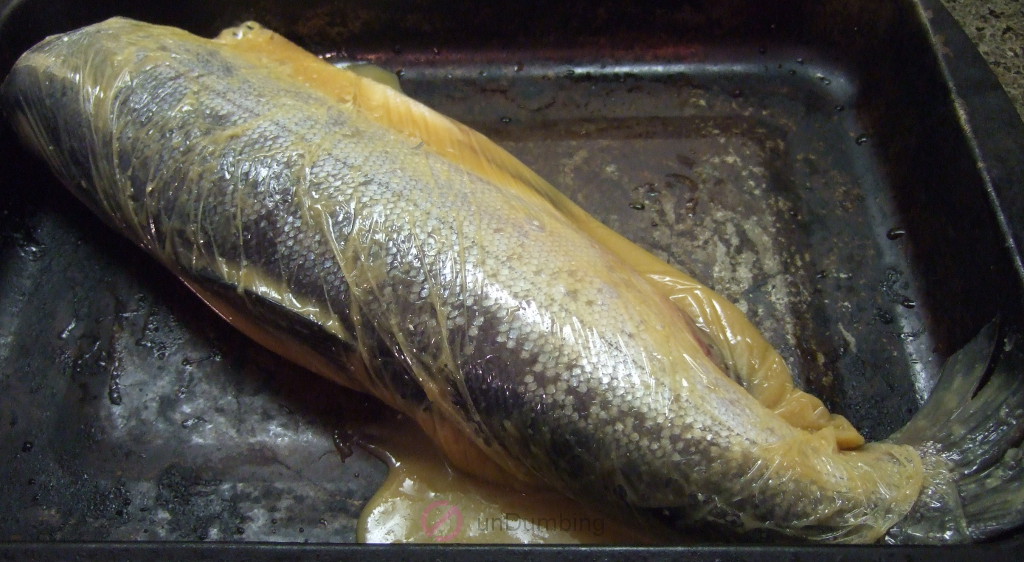
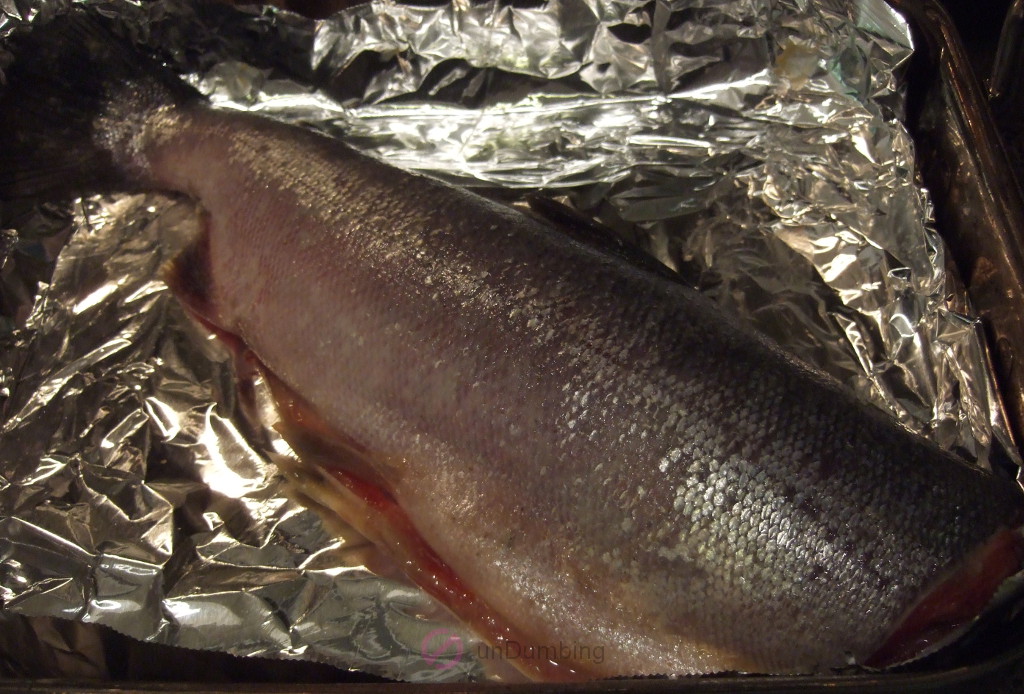
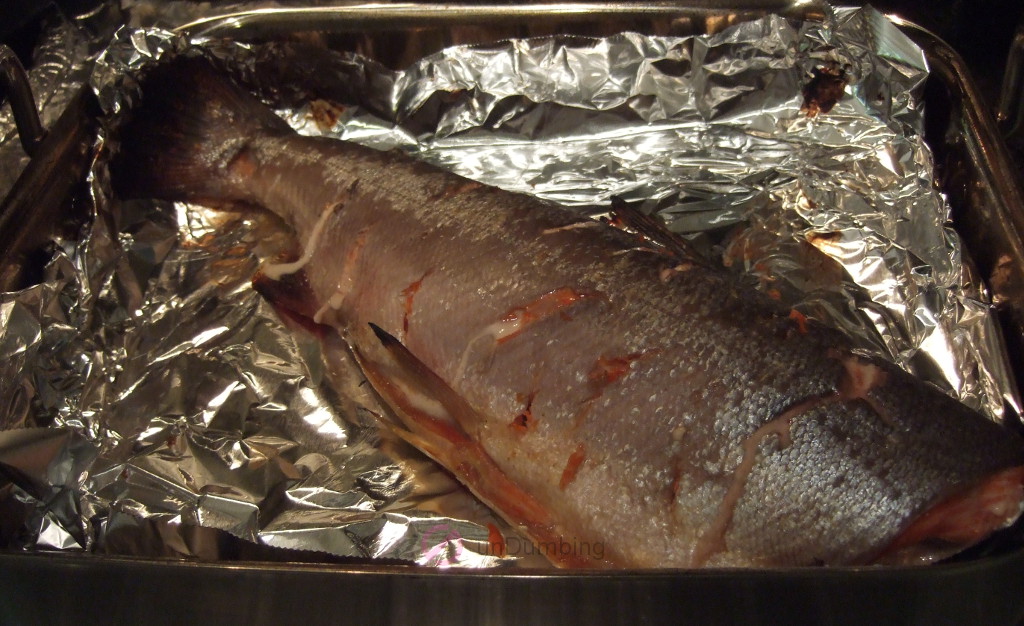
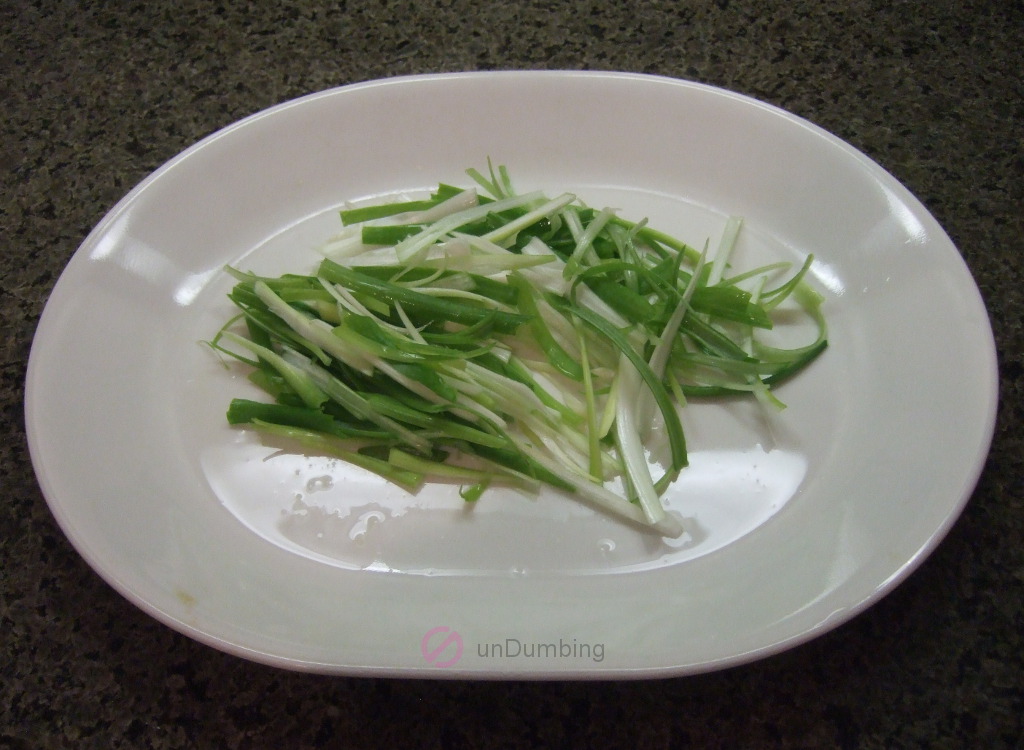
Time to Eat
With scallions on the salmon, I was ready to serve it for dinner.
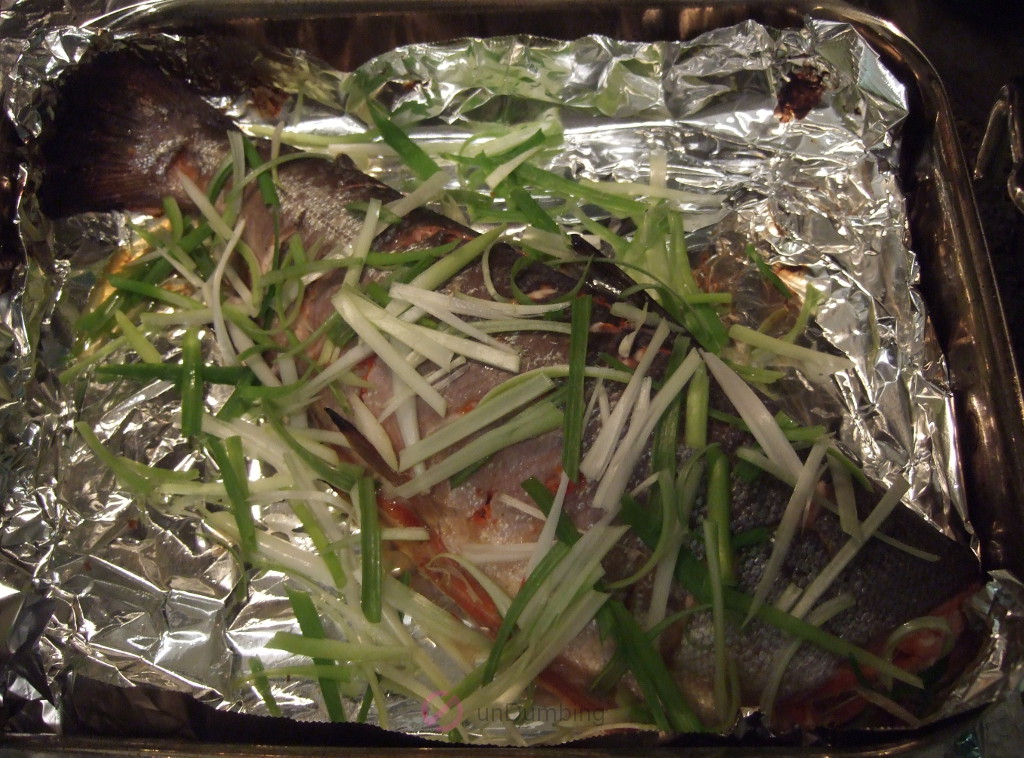
Recipe Rating
Below were the results of the recipe after the first try:
| Number of Ingredients | Effort (Low🤏, Medium🤏🤏, High🤏🤏🤏) | Cost per Serving (<$2💰, $2-5💰💰, >$5💰💰💰) | Taste (Not for me🤔, Trying Again🙂, Eating Regularly😋) |
|---|---|---|---|
| 7️⃣* | 🤏 | 💰💰 | 🙂 |
After trying the fish, I found the flavors too light and the meat too cool. Also, I would’ve preferred the fattier Atlantic instead of the leaner sockeye salmon.
Second Try
During the second attempt, my goal was to marinate a side of salmon in hopes that the flavor would be more pronounced and flesh warmer.
Ingredients to Use
After purchasing a sockeye salmon fillet weighing 2.03 pounds, I used the same ingredients as the first time. However, since I didn’t have enough mirin for the 5 servings in the default recipe, I made up the rest by substituting it with a mixture of sake and sugar.
Based on the article, Japanese Pantry Essentials: Sake vs Mirin, from Just One Cookbook, the same website that I referenced to make honey-flavored chicken and Japanese chicken curry, the ratio for the alternative would be 1 tablespoon of sake mixed with 1 teaspoon of granulated sugar.
As for the garnish, I only used one scallion this time.
Steps to Prepare
For the process, as compared to the first try, only the following steps were different:
- Step 2 – Though I used the baking pan as the work surface again, there was no tail to contend with this time. As for the marinade, I divided it in two parts, according to the instructions.
- Step 4 – Since I started to marinate the salmon late one night, I decided to continue it for about 43 hours.
- Step 5 – I let the salmon come to room temperature over a period of 2 hours this time.
- Step 8 – For this step, I followed the recipe by resting the fish for 5 minutes under a piece of foil.
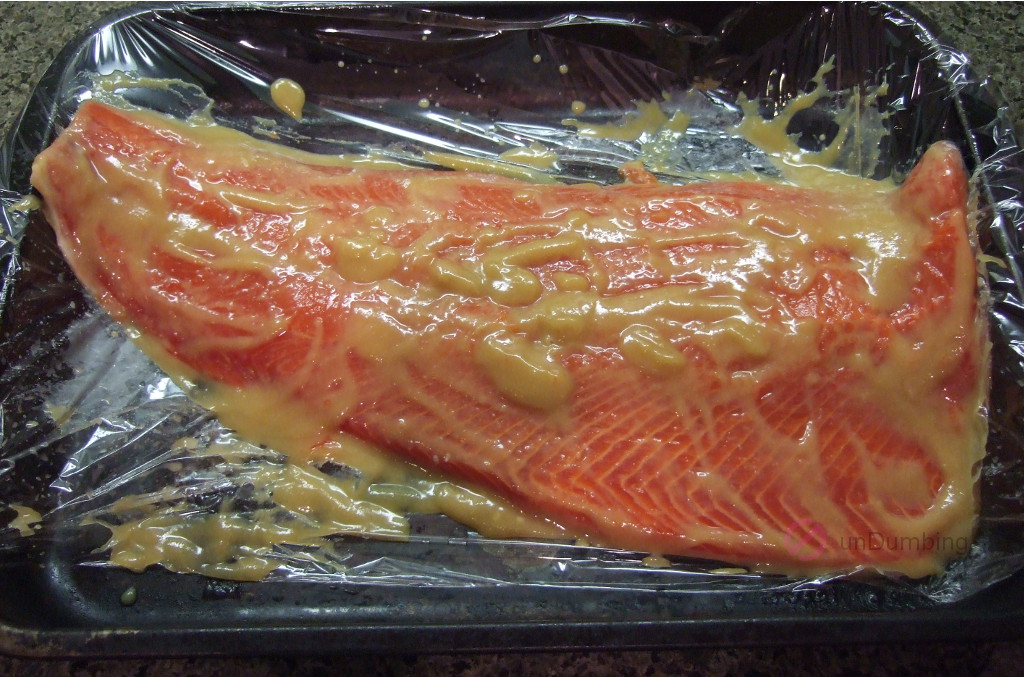
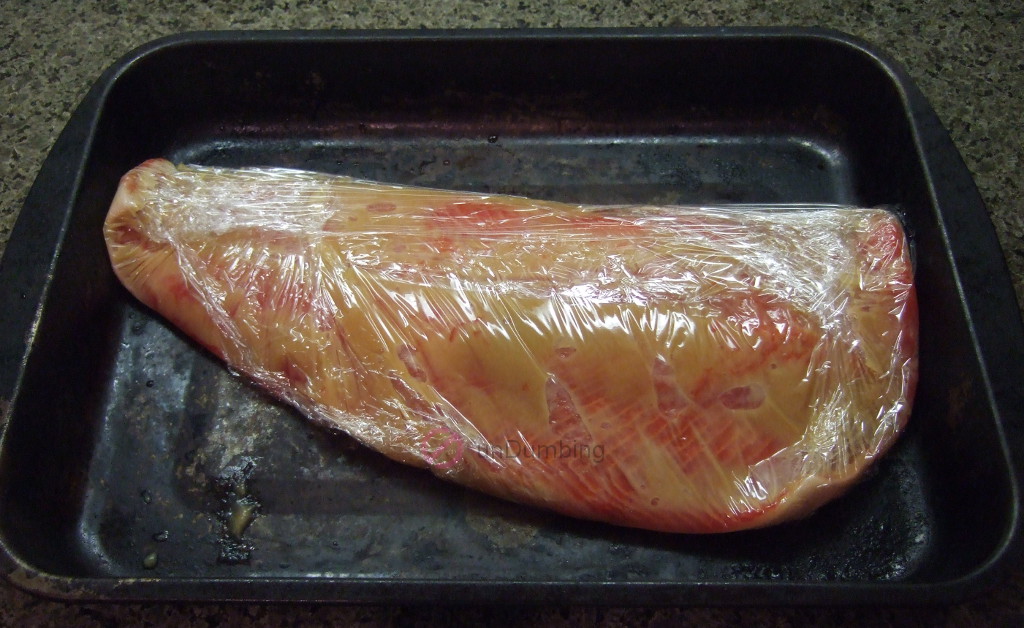
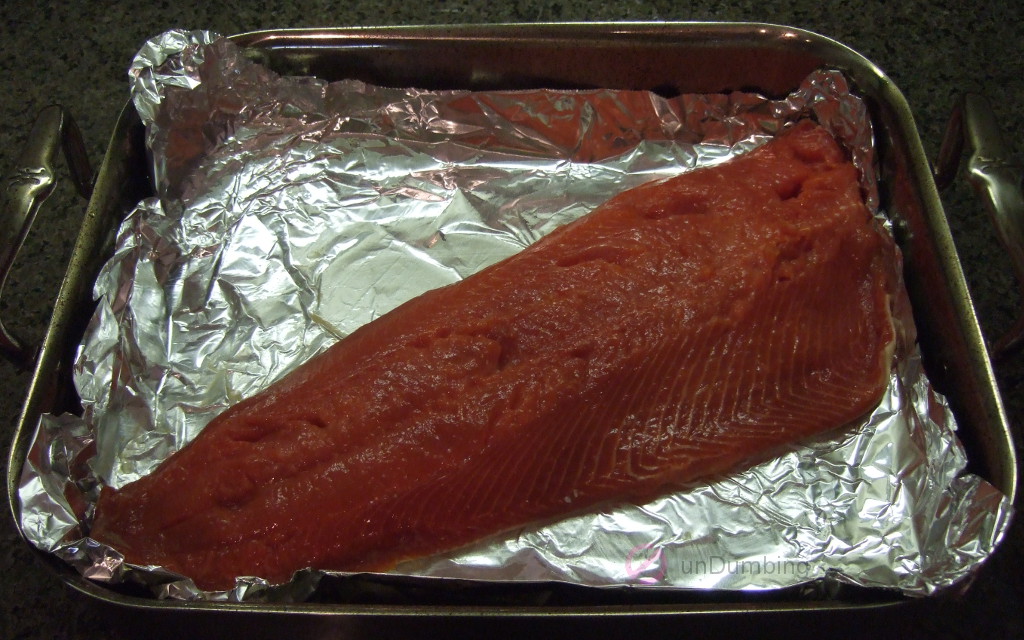
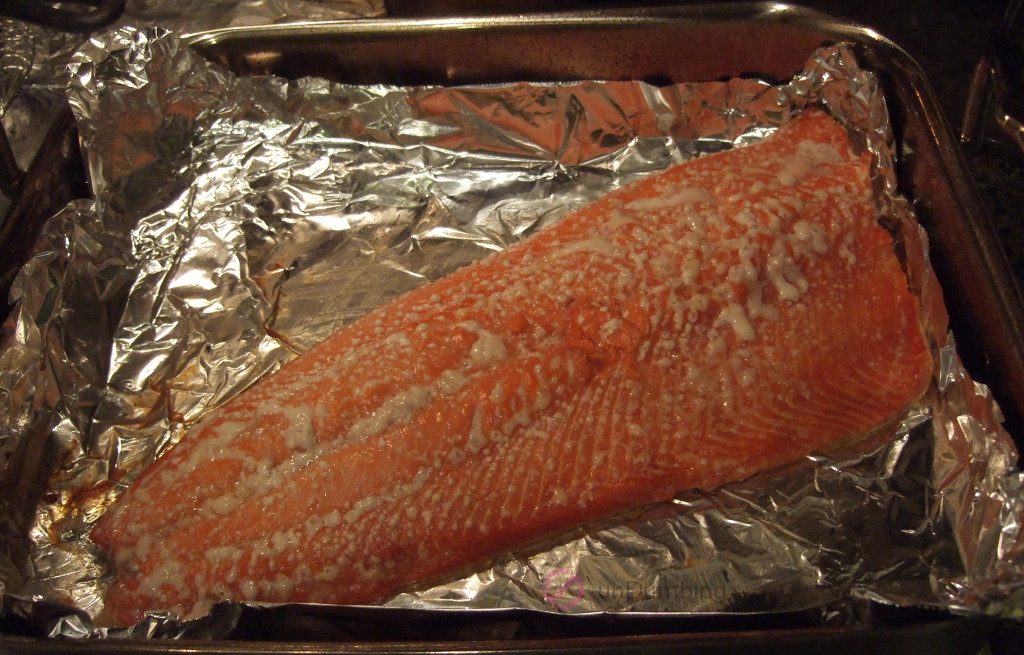
Time to Eat
Since I used the cut of fish as noted in the recipe, I was curious to see if this helped with the flavor and temperature of the meat.
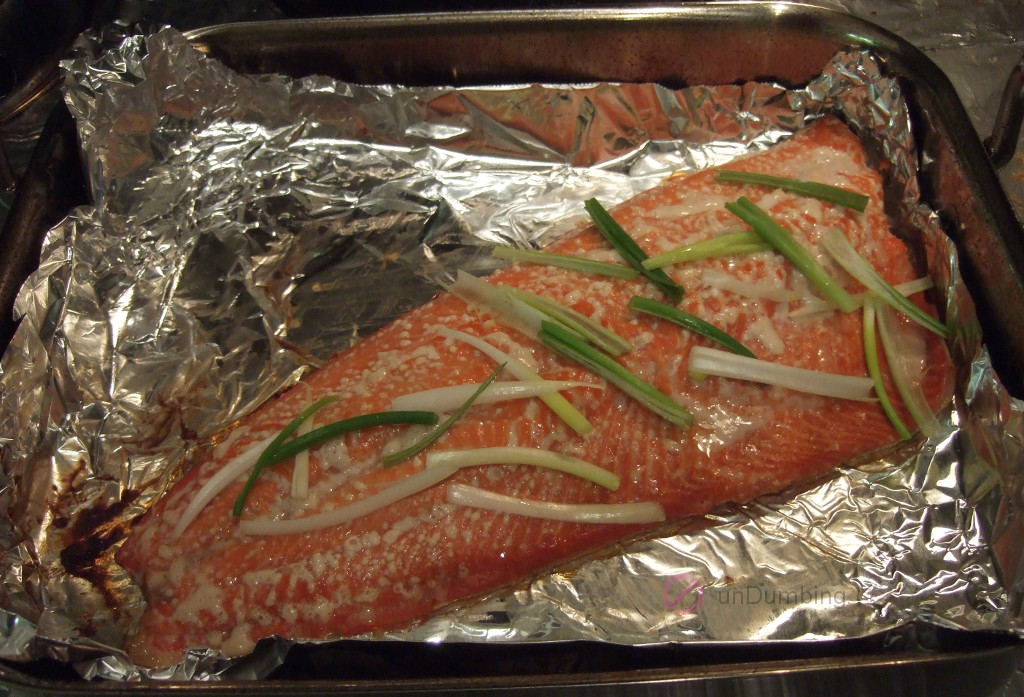
Recipe Rating
Below are the results of the recipe from the second attempt:
| Number of Ingredients | Effort (Low🤏, Medium🤏🤏, High🤏🤏🤏) | Cost per Serving (<$2💰, $2-5💰💰, >$5💰💰💰) | Taste (Not for me🤔, Trying Again🙂, Eating Regularly😋) |
|---|---|---|---|
| 7️⃣* | 🤏 | 💰💰 | 🤔 |
The salmon was warmer, surprisingly tender, and more flavorful. However, I wasn’t crazy about the sweetness this time.
It’s unlikely that I’ll try this recipe again, but if I were to, I would do the following:
Continuous Improvement
- Stick with mirin instead of a substitute of sake and sugar.
- Use Atlantic salmon.
From this experience of baking salmon, I learned the following that I would like to share with my dumber self:
Lesson for Dumber Self
- A whole fish can’t be substituted for a side of fish!
What will you do now?
Next Step for You
- Try the recipe, Japanese Miso Salmon Side (BBQ or bake), from the food blog, RecipeTin Eats?
- Share your favorite way of cooking sockeye salmon?
- Read another post on this site? (Go to the menu at the top of the page.)
